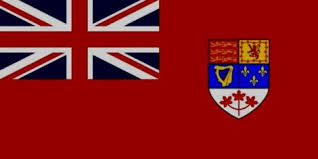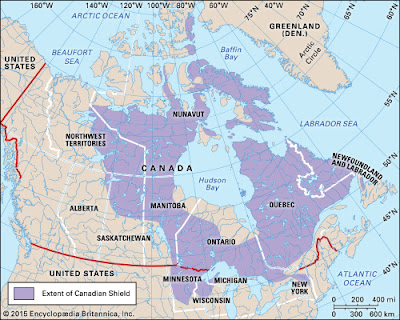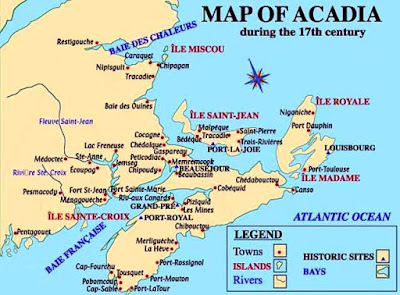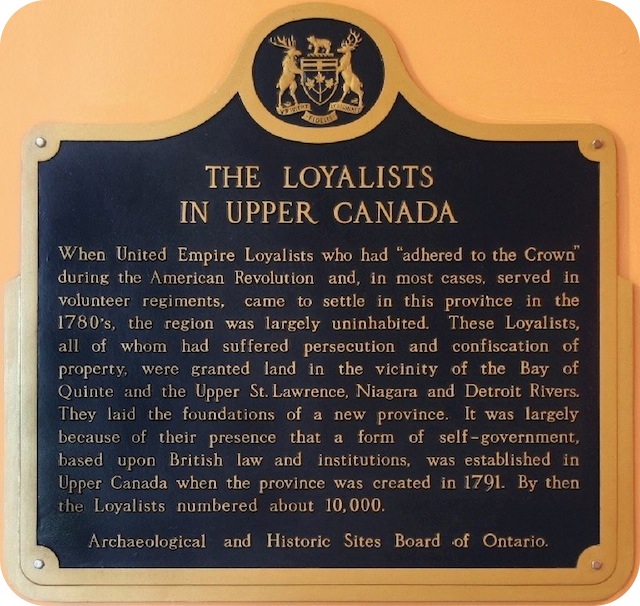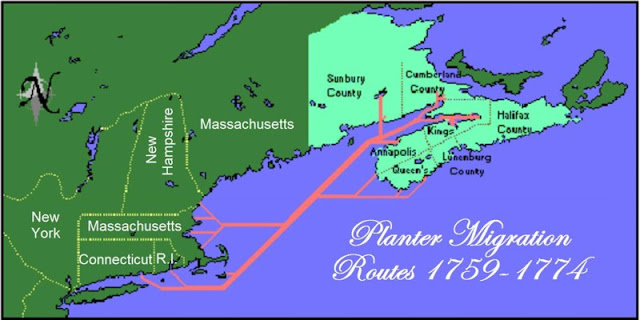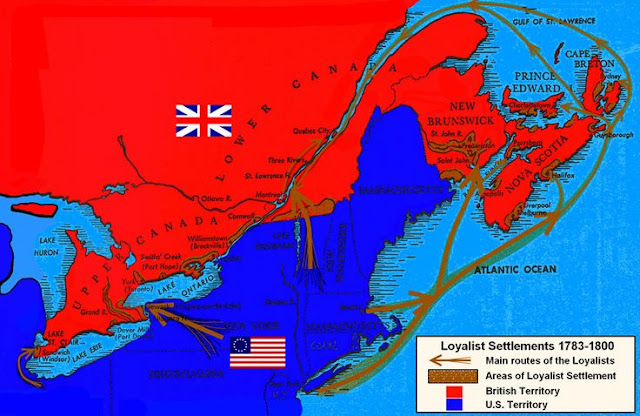I am, as you may be aware, neither a fan nor a friend of either liberalism or the left. If forced to choose between the two, I would pick the classical, nineteenth century, form of liberalism – individual rights, economic freedom, limits on government – over the left any day, but my instincts have always been conservative, that is to say, inclined towards order, tradition, and institutions that have been tested, proven, and honoured by time. A Tory is a specific kind of conservative, for whom the most cherished of time-honoured institutions are royal monarchy in the political sphere and the Apostolic Church in the religious sphere. Politically, I have been a Tory all my life, and as my theology has developed in a high church direction over the years, I have become so religiously as well. Unlike liberalism and leftism, neither conservatism nor Toryism, properly understood, is an ideology – a formula that purports to provide the political solution to all our problems. Indeed, the conservative and Tory are fundamentally anti-ideological, respecting the lesson of the past, that institutions, tested and proved by time, are to be trusted, over the formulations of intellectuals, however well-intentioned, for these never deliver the Paradise on earth they promise and more often than not do a great deal of harm in the name of doing good.
The non-ideological bent of the conservative and Tory allows him both to reject the foolishness and nonsense of liberalism and the left and to acknowledge the rare occasion when an idea coming from those quarters has merit. While, as indicated above, in my eyes nineteenth century liberalism produced more such ideas than any form of leftism then or since, I believe in giving credit where credit is due. While I disagreed with the late editor of Counterpunch, Alexander Cockburn on the vast majority of matters, I thought he was dead on right when it came to his opposition to American military interventionism in the Balkans and the Middle East. The late Gore Vidal had a lot of sensible things to say on such matters as well. Although I don’t agree with much that Noam Chomsky has to say when it comes to politics, his analysis of how the mass media shapes and limits thought in democratic societies is essential reading and I have always respected the consistency of his stand for free speech. Whereas most liberals and leftists switch from free speech mode, when they are defending subversives and terrorists, to become censorious witch hunters when anyone touches their sacred cow, the Holocaust, Chomsky, a consistent advocate of free speech, defended French professor Robert Faurisson, braving the wrath of loud mouthed fools on both the left and right to do so.
Admittedly, I find it easier to give credit to leftists for good ideas when those ideas are left over from a Tory upbringing. The Honourable Eugene A. Forsey, although raised a MacDonald-Meighan Conservative, was for the most part of his life a man of the left, a social democrat who, before accepting a seat in the Senate as a Liberal, had worked for both the labour movement and the Cooperative Commonwealth Federation. Despite this, and through all of this, he remained a man of deep Christian principles, and a patriotic defender of our country’s constitution, parliamentary monarchy, Common Law legal system, and traditional heritage and symbols, for which I admire and respect him. Other prominent Canadian social democrats who to one degree or another shared Forsey’s residual conservatism included Tommy Douglas, Stanley Knowles, and even, at least on the point of the monarchy, the late Jack Layton.
I say all of this by way of introduction to the following essay, which looks at an early twentieth-century leader of the Canadian left, who expressed sensible views that are completely verboten among the left of the present day, on the subject of immigration. Consider this quotation:
When it has become necessary in the United States to form an Immigration Restriction League, it is surely high time that we examined closely the character of our immigration, and shut out those whose presence will not make for the welfare of our national life.
These words are the opening paragraph to chapter twenty-one, entitled “Restriction of Immigration”, in Strangers Within Our Gates: Or Coming Canadians, originally published in 1909, the author of which was the Rev. James Shaver Woodsworth, a Methodist minister who at the time was superintendent of All People’s Mission in Winnipeg, an outreach ministry that worked with the poor and especially new immigrants. Woodsworth would later be elected to Parliament as the representative of Winnipeg North. He ran as a socialist, initially for the Independent Labour Party, later for the CCF of which he was the first leader. The CCF was a party that combined prairie populism with social democracy, and which was undergirded by the theology of the Social Gospel. While that theology is not sound from the perspective of historical, traditional, and Scriptural orthodoxy, the CCF outlook was much to be preferred over the hard-left, secular Marxist, ultra-politically correct perspective of its successor, today’s NDP.
Woodsworth went on in the next paragraph to quote approvingly two American Presidents, including Roosevelt (Theodore) who said “We cannot have too much immigration of the right kind, and we should have none at all of the wrong kind. The need is to devise some system by which undesirable immigrants shall be kept out entirely while desirable immigrants are properly distributed throughout the country.”
Can you imagine Jagmeet Singh or anyone in the party he leads quoting anything that sensible approvingly today?
Woodsworth contrasted the way Canada “eager to secure immigrants, has adopted the system of giving bonuses” with the way the United States “levies a head tax that more than defrays the cost of inspection.” In other words, we were paying for our immigration, the United States was making it pay for itself. He then quoted extensively from the Immigration Act of 1906, specifically clauses 26 through 33. Clauses 26 through 29 prohibited the immigration of anyone who “is feeble-minded, an idiot, or an epileptic, or who is insane, or who has had an attack of insanity within five years…is deaf and dumb, blind or infirm, unless he belongs to a family accompanying him or already in Canada”, “who is afflicted with a loathsome disease, or with a disease which is contagious or infectious, and which may become dangerous to the public health or widely disseminated”, “who is a pauper, or destitute, a professional beggar, or vagrant, or who is likely to become a public charge”, “ who has been convicted of a crime involving moral turpitude, or who is a prostitute, or who procures, or brings or attempts to bring into Canada prostitutes or women for purposes of prostitution.” Clause 30 authorized the Governor-in-Council to further prohibit “any special class of immigrants” when deemed necessary, and clauses 31 to 33 specify the procedures whereby all of this is to be enforced. After quoting all of this material Woodsworth commented:
No one will quarrel with the provisions of this Act, but it should go further, and provision should be made for more strict enforcement.
Among his suggestions for improving the Act, are the prohibition of other classes that were then barred from immigrating to the United States – “polygamists; anarchists, or persons who believe in, or advocate, the overthrow by force or violence of the Government of the United States, or of all forms of law, or the assassination of public officials” etc., – and “the prohibition or careful selection of assisted immigrants.” Take note of the latter, which he says “is of the greatest importance.” Rather than prohibit or carefully select assisted immigrants, the new immigration regulations of 1967 do the exact opposite of this and make the sponsorship of immigrants into a backdoor by which the requirements of the points system that these regulations introduced can be bypassed altogether.
As far as provision “for more strict enforcement” goes, Woodsworth says the following:
The trouble is that we are working at the wrong end. The examination in every case should be not at the ports of entry, but at the ports from which the immigrants sail – or better still at the homes from which they come. Such a course would be at once kinder to the immigrants and much safer for our country…Again, the examination where the people are known is the only effective method. Diseased, paupers, criminals, prostitutes and undesirables generally are known in their home neighborhood…The Canadian Government should insist on the immigrant presenting a satisfactory certificate from the Government officials of his own country. If the foreign governments would not co-operate, if they are too despotic or corrupt to make such an arrangement practicable, then we should appoint our own agents in Europe who would make most thorough investigation.
As with the careful selection of assisted immigrants, a major problem with the post-1967 immigration system is that we have gone in the exact opposite direction of what Woodworth proposed. Until then, a prospective immigrant had to go to a Canadian visa officer in one of our embassies, consulates, or High commissions abroad, and apply from outside of Canada. In October of 1967, a regulation was passed waiving this requirement and allowing legal visitors to Canada to apply from within the country. Charles M. Campbell, who served on the Immigration Appeal Board for ten years, eight as vice-chairman, explained that this, together with the establishment of the Immigration Appeal Board and the right to appeal a negative decision, led to the situation in the early 1970s where the system was completely swamped. Since this change had been made by regulation and was not part of an actual Immigration Act it was easily repealed in 1973, about the time that the Liberal government passed a general amnesty to deal with the backlog. It was only on paper, however, that we went back to the old rules. Today, the right to apply from within Canada is supposedly limited to select groups, like spouses of Canadians, but in reality, this is nullified both by the absurdity that “outland applications” can be made from within Canada and by the policy of making broad exceptions for “humanitarian and compassionate” reasons.
Woodsworth’s ideas would make him persona non grata today in the successor to the party he once led, as well as in the Green, Liberal, and, sadly, Conservative Parties. They are, however, basic plain sense. Governments are established for the common good of the countries they govern, not for the common good of all people, everywhere. Until quite recently, only American liberals with their naïve notion of their republic as the “first universal nation” were foolish enough to think otherwise. Governments, therefore, owe it to the countries they govern, and the people who already live in those countries, to be selective as to who they let in. It is their duty, not just their right, to allow desirable immigrants in and keep undesirables out. Those who disagree with this will try to argue that “desirable” and “undesirable” are entirely subjective and based upon irrational prejudice, but it is pretty obvious that the classes Woodsworth speaks of as undesirable – those who are subversive of government, law and order, criminals, or who because of poverty or mental or physical conditions are more likely to be public expenses than contributors – are objectively undesirable from the standpoint of a government looking out for its nation’s interests.
Today, the first, and usually only, response of the liberal-left to those who call for selective, restrictive, immigration that lets the desirables in but keeps the undesirables out is “racist.” This is their response even if the immigration restrictionist has gone out of his way to avoid bringing race, ethnicity, and culture into his arguments. Rev. Woodsworth had the following to say about this aspect of the immigration question, speaking specifically to immigration from Asia:
The advocates for admission argue that we ought not to legislate against a particular class or nation, and that the Orientals are needed to develop the resources of the country. Their opponents believe that white laborers cannot compete with Orientals, that the standard of living will be lowered, and white men driven out, and they claim that a nation has the right to protect itself… Perhaps, for some time, the presence of a limited number of Orientals may be advantageous. But it does seem that the exclusionists are right in their contention that laborers working and living as the Orientals do, will displace European laborers. It is generally agreed that the two races are not likely to ‘mix.’ Ultimately, then, the question resolves itself into the desirability of a white caste and a yellow, or black caste, existing side by side, or above and below, in the same country. We confess that the idea of a homogenous people seems in accord with our democratic institutions and conducive to the general welfare. This need not exclude small communities of black or red or yellow peoples. It is well to remember that we are not the only people on earth. The idealist may still dream of a final state of development, when white and black and red and yellow shall have ceased to exist, or have become merged into some neutral gray. We may love all men, and yet prefer to maintain our family life.
These words, written a hundred and ten years ago by the man who went on to lead the Canadian left for the first half of the twentieth century, would immediately bring down the charge of racism upon their author’s head today. Thirty years ago, the ideas contained in those words were enough to get people kicked out of the Reform Party of Canada, and indeed, as far back as 1972, when the University of Toronto Press put out the reprint edition that I have been quoting, they saw a need to stick an introduction by Marilyn Barber, explaining away Woodsworth as a product of his times.
While there are those who would say that this is a positive development, showing that we have come a long way as a society, and are so much more enlightened now than we were a century ago, the reality is that accusations of racism have, since the late 1960s, been primarily a means for stifling discussion, discouraging rational thought, and silencing dissent to ideas that could not bear up under scrutiny for a second.
Is it racist to take questions of race, culture, nationality, religion, and ethnicity into consideration in selecting immigrants?
Before giving the knee-jerk answer of “yes”, note that there is more than one way in which these questions can be taken into consideration. A government could make it its policy to preserve its country’s ethnic status quo and so refuse to admit immigrants that would alter that status quo. A government could make it its policy to ignore these matters altogether in selecting immigrants. A third possibility is that a government could make it its policy to deliberately and radically alter its country’s ethnic status quo by discriminating in favour of immigrants who differ from the majority of its population and bringing as many of them in as fast as it possibly can. Let us call these Options 1, 2, and 3.
Option 2 is the only policy that is racially and ethnically neutral. It is, therefore, the least susceptible to the charge of being racist. Option 1 is the policy that is most frequently condemned as racist. Of the two non-racially neutral policies, however, it is the only one that can be defended morally. The known negative effects of altering a country’s ethnic status quo include a weakening of social cohesion and communal feeling, a decrease in confidence in one’s neighbours, fellow citizens, government, and society, and, perhaps ironically, an increase in racial and ethnic negative feeling, hostility and strife. When, just over ten years ago, Harvard political scientist, Robert D. Putnam, published a paper, originally a lecture, that interpreted data that he had gathered in a study on the relationship between diversity and social capital as saying that “In the short run…immigration and ethnic diversity tend to reduce social solidarity and social capital” and that in diverse neighbourhoods “residents of all races tend to ‘hunker down’” and that “Trust, (even of one’s own race) is lower, altruism and community cooperation rarer, friends fewer,” he was not telling us anything that had not already been known and recognized from time immemorial. If you introduce one or two newcomers into a homogenous community who differ from the majority ethnically, they may indeed have the much lauded effect of improving the community in the way that is often expressed in the cooking metaphor of adding flavor or spice. This effect decreases, however, in inverse proportion, as the diversity increases. There is a relatively low saturation point – decades ago, Daniel Cappon of York University’s Department of Environmental Studies told the Globe and Mail that the “critical mass” was ten percent – beyond which, the negative effects of ethnic diversification take over. The larger the change and the faster it is accomplished the greater will be these negative effects. The wish to avoid these negative effects is sufficient reason and justification for Option 1, the policy of preserving the status quo. It requires neither irrational racial prejudice nor some ideological notion of racial purity – just plain, old-fashioned, sense.
Over the course of her history, the government of the Dominion of Canada has gone through three basic phases with regards to these policy options. From 1867 to 1962, Option 1 was reflected in federal immigration policy. This was true regardless of which party was in power, Conservative or Liberals, and, as we have seen, it had a supporter in the first leader of the CCF as well. In 1962, Ellen Fairclough the Minister of Immigration in the Cabinet of the Conservative government of John Diefenbaker, introduced what was basically a combination of Options 1 and 2. Racial, cultural, and ethnic preferences were eliminated for individuals applying to immigrate to Canada, but the rules which prohibited people from countries other than traditional source countries from sponsoring their extended families were retained. This reflected the thinking of the Prime Minister at the time, who wanted to be fair and non-discriminatory to individuals, Option 2, without radically changing the country’s demographics, Option 1. This, arguably the best of the phases, was also the most short-lived. It lasted until 1966-1967. In 1966 the Liberal government put out a White Paper recommending a new Immigration Act that would radically overhaul the immigration system. In October of the following year that overhaul took place, albeit through a change of regulations by Order-in-Council, as Diefenbaker’s changes had been, rather than through the new Immigration Act, which came nine years later. Thus began the phase of practicing Option 3 while pretending that it is Option 2 that has continued to this day. If Diefenbaker’s policy combined the first two options in the best possible way, this was and is the worst possible combination.
Here is how this was accomplished. The new regulations in October 1967, first, established the points system by which individuals now apply to immigrate to Canada, and second, eliminated the remaining racial and cultural restrictions so that everyone, regardless of race, ethnicity, and culture could sponsor the same number and range of relatives. On paper, this looks like pure Option 2. The points-system, on its own merits, is quite fair. The prospective immigrant is awarded points towards entry for his ability to speak English and/or French, his level of education, his skilled experience in a trade for which there is a need of labourers, his age (maximum points for 21-49), his having an offer of employment in Canada, and miscellaneous similar factors. The problem is that two large back doors were put in place by which the points system can be bypassed. This is how Option 3 was snuck in and disguised as Option 2.
One of those backdoors is the sponsorship of relatives. Assisted or sponsored relatives, do not have to meet the strict requirements of the points system like individuals who apply on their own merits. In traditional source countries, the trend for the last couple of centuries has been towards the small, nuclear, model of the family. Couples have fewer children than before, and their ties to extended family – relatives beyond the nuclear model – are much weaker than they were before the Second World War, let alone prior to the Industrial Revolution. By contrast, in non-traditional source countries, the tendency is still towards large families, with many children, and strong, binding, ties to the extended family. This is not said by way of criticism of those cultures. Indeed, as I have argued in the past, in the modern transition to the nuclear model we can see the early stages of the social unravelling of the West and the “war on the family.” The point is that people from non-traditional source countries will be far more likely to want to bring a huge number of relatives over with them than people from traditional source countries, and both the Diefenbaker Conservatives and the Pearson-Trudeau Liberals, knew this. This is why the former, not wanting the country to be radically and rapidly transformed, retained racial and cultural restrictions on sponsoring relatives when they removed the other racial and cultural preferences. This is why the later, removed those restrictions. It is not that they wanted to be fully racially and ethnically neutral in their policy. They wanted to make Canada as diverse as they could, as fast as they could – Option 3 – while pretending to be neutral – Option 2. When they passed their new Immigration Act in 1976, the emphasis was on “family reunification”, by which wording Canadians were sold a bill of goods. A streamlined immigration application process for the purpose of family reunification makes sense when we are talking about bringing in the spouses and children of Canadians who have married abroad. What the Trudeau Liberals meant by it was making it easier and quicker for people from the Third World to bring their entire extended families into the country so as to change the country’s demographics – or, as the Liberals themselves put it, “change the face of Canada” – as fast as possible. This is not a racially neutral policy, nor is it a policy that has Canada’s interests at heart.
Remember that Rev. Woodworth said that “the prohibition or careful selection of assisted immigrants is of the greatest importance.”
The other backdoor is the refugee system. We had foolishly signed the United Nations’ Convention Relating to the Status of Refugees, giving that body, established by an evil and insane American President as a monument to his own ego, the General Assembly of which exists only to provide a soapbox for the voices of every tin-pot dictatorship, military junta, kleptocracy, and failed state on the planet, the Security Council of which exists merely to rubber stamp the decisions of the American government, the right to dictate our refugee policy. Unlike the other signers, however, we have used the Convention as an excuse to make ourselves the laughing stock of the world, by pretending that illegal aliens are asylum seekers who have a “right” to cross our borders without going through the proper channels, and accepting a high percentage of “self-selected” refugees, of whom only a very small percentage are actually fleeing for their lives. Chapter seven, “How Canada Fails Refugees”, of Toronto writer, Daniel Stoffman’s, Who Gets In, is a must read on this matter. Stoffman shows how our corrupt refugee system, which primarily serves to line the pockets of immigration and refugee lawyers, actually makes it harder for real refugees to get in, by showing preference for the fakes and frauds. Reforms were made after this book was published but these all went out the window when Justin Trudeau became Prime Minister in 2015 and the system is now worse than it ever was before. Trudeau, a supporter of the previous American administration’s policy of intervention in Syria that produced a Civil War that has killed half a million people and displaced millions of others, insists that we have a responsibility to bring those who have been displaced over here. Sensible people would question the sanity of bringing thousands of people, whom you have helped murder and displace with your irresponsible interventionism, and who would have cause to hold a grudge against you even if they were not predominantly of a religion in which holy war is one of the core tenets, over to live in your own country. Especially, when you promise to bring them over in such large numbers and such a short period of time that you cannot possibly vet them properly. The folly of all of this has been matched only by its corruption – the Trudeau government did not go to actual refugee camps to find the “asylum seekers” it brought over, but rather found the majority of them in apartment buildings in cities in Turkey, Jordan, Oman, and Lebanon where they had been living for years and bribed them to come over and get their picture taken with Trudeau before being put into refugee camps here!
Through these two large back doors, Option 3 became Canada’s official immigration policy, under the guise of practicing Option 2. While it was the Pearson-Trudeau Liberals who started this, it has remained the policy of our government ever since, even in the periods in which the Mulroney and Harper Conservatives were in power. That Option 3 was intentional on the part of the Grits is evident from the results. At the start of Pierre Trudeau’s premiership, English Canadians, French Canadians, and white ethnics, taken together, compromised over 95% of Canada’s population. If trends continue, they will be a minority in Canada in 2050. A change that large does not happen that fast unintentionally. Perhaps those who introduced this phase of Canadian immigration policy did not foresee the scale of the change but demographic transformation was their intention.
This policy has never been popular. Polls conducted, from the beginning of this phase until the present day, have shown that the majority of Canadians do not and have never wanted immigration that radically changes the ethnic makeup of the country. Now, let me be clear, the modern democratic dogma that “the majority is always right” is false – it would be more accurate to say the majority is usually wrong – and government has a duty to do what is right, even when this is not what the majority wants. In this case, however, majority opinion corresponds with what we know to be true about large scale, rapid, demographic transformation being bad for established communities and countries, and the reason for this correspondence is clear – the majority are those who have to live, every day, with the results of immigration policy, whereas the politicians who make that policy, and their academic and media supporters, have largely isolated themselves from the consequences of their ideas, living in controlled, largely homogenous, communities, just as they have isolated themselves from all criticism of their ideas, by shrieking “racist” whenever anyone questions – or even dares to take notice of – the transformation that is quickly taking place before their very eyes.
Today, the Canadian left is all on board the “let’s make Canada as diverse as we can, as fast as we can” train, even though the brunt of the negative consequences must be borne by working class Canadians, the poor, and basically all those for whom the left until fairly recently professed to speak. The Canadian left of the twenty-first century would have no room for the likes of the Reverend J. S. Woodsworth. Indeed, if he were still ministering in the Winnipeg of the current year, expressing the same views as he did in 1909, in all likelihood Mayor Duckie would wring his hands in despair and order a police investigation, Helmut-Harry Loewen would seize the opportunity to get his name in the newspapers on a regular basis by warning of the imminent threat he posed, David Matas would consider initiating legal proceedings against the “Hitler of the North End” on behalf of Binai B’rith, and the ironically-if-unawarely-named Fascist Free Treaty One would seek to prevent his views from being heard through crude intimidation tactics, whereas I, on the other hand, would find myself in the odd and unusual position, of having to cheer the old socialist on.
Works Referenced
Charles M. Campbell, Betrayal & Deceit: The Politics of Canadian Immigration, West Vancouver, Jasmine Books, 2000.
Daniel Stoffman, Who Gets In: What’s Wrong with Canada’s Immigration Program – and how to fix it, Toronto, Macfarlane Walter & Ross, 2002.
J. S. Woodsworth, Strangers Within Our Gate: Or Coming Canadians, Toronto, University of Toronto Press, 1972 (original edition 1909)



